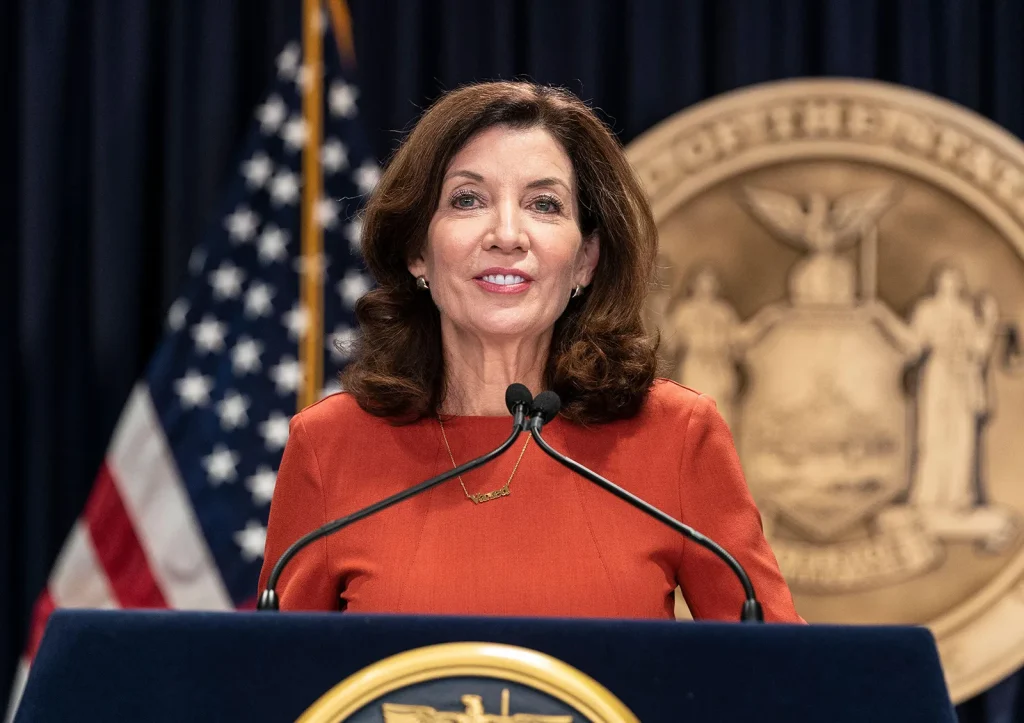New York Commits $25 Million to Farm Projects Protecting Water Quality

- Record $25 million awarded through state programs to fund 50 farm water conservation projects across New York.
- Funding blends Environmental Protection Fund ($14m) with first-time use of the 2022 Environmental Bond Act ($11m).
- Marks 30 years of the Agricultural Nonpoint Source Program, which has directed over $250 million to on-farm projects.
Albany expands farm conservation finance
New York is channeling $25 million into farm-based water quality projects, the largest single round of funding in the history of its Agricultural Nonpoint Source Pollution Abatement and Control Program. The financing, announced by Governor Kathy Hochul, combines allocations from the long-running Environmental Protection Fund (EPF) with the first tranche of support from the voter-approved Clean Water, Clean Air and Green Jobs Environmental Bond Act of 2022.
The dual funding streams will support 50 projects across 25 counties, ranging from manure management systems to stream buffers and cover crops. By leveraging the Bond Act alongside the EPF, officials said the program can now reach more farms and accelerate investments in nutrient recycling and runoff prevention.
“Our farmers care deeply for the land they work, so it’s critical we provide them with the resources they need and deserve to safeguard our waterways while protecting communities from climate change,” Hochul said.

From dairy lagoons to watershed buffers
The program’s 30th round is financing projects as varied as a 1.4 million-gallon nutrient storage and transfer system at Van Patten Farms in Cortland County, designed to improve water quality in the Tioughnioga River watershed. Other allocations will help farmers in western New York reduce nutrient runoff into the Genesee River, strengthen buffers around Cayuga Lake, and expand conservation practices in the Finger Lakes, Mohawk Valley, and Long Island Sound watersheds.
Allocations range from less than $200,000 for single-farm projects to multi-million-dollar grants supporting regional conservation initiatives. Counties with large dairy and crop operations, such as Wyoming, Delaware, and Onondaga, received some of the largest awards.
Amanda Lefton, Commissioner of the Department of Environmental Conservation, said the record funding “will help make it more affordable for farmers to implement effective environmental strategies,” strengthening partnerships between state agencies, local soil and water districts, and farms.

Policy, climate, and business drivers
State officials frame the investments as both environmental stewardship and economic resilience. New York’s Department of Agriculture and Markets Commissioner Richard A. Ball noted the infusion of capital ensures farms remain “competitive, profitable, and sustainable” while meeting stricter climate and water regulations.
The funding comes at a time of rising scrutiny on nutrient pollution, harmful algal blooms, and agriculture’s greenhouse gas footprint. The EPF and Bond Act support practices such as advanced manure management, which can reduce methane emissions while conserving soil nutrients.
The $25 million injection also reflects growing alignment between farm policy and climate resilience. Hochul’s FY2025 budget allocates $81.8 million for agricultural sustainability programs, including climate-resilient farming grants and capital support for soil and water districts. The Bond Act, backed by $4.2 billion in voter-approved funds, is intended to modernize water infrastructure, reduce emissions, and reinforce climate adaptation efforts across New York.
RELATED ARTICLE: NY’s Governor Hochul Announces $150M in Clean Energy Project Grants for New York Public Colleges
Thirty years of Ag Nonpoint financing
Since its creation three decades ago, the Agricultural Nonpoint Source Program has awarded over $250 million to projects designed to curb diffuse agricultural pollution. Run through the state’s Land and Water Division, the program supports both planning and implementation of best management practices under the Agricultural Environmental Management framework.
District-level soil and water committees serve as intermediaries, applying for funds on behalf of farmers and assisting with project design and installation. That model, advocates argue, ensures local tailoring of conservation strategies while aligning with statewide water quality goals.
Matt Brower, chair of the New York State Soil and Water Conservation Committee, said the latest awards will help farms “install needed practices to protect water quality across the state,” adding that the program demonstrates long-term farmer commitment to conservation.
Implications for ESG and investors
For investors and executives tracking sustainable agriculture, the scale of this round reflects both regulatory and financial tailwinds. Public financing is being leveraged to de-risk environmental upgrades on farms, creating opportunities for equipment suppliers, ag-tech firms, and service providers.
With nutrient management and water quality now linked to carbon strategies, the initiatives highlight how state-level programs are shaping the cost curve for climate-smart farming. The interplay of public bonds, state funds, and on-farm capital outlay provides a case study in blended finance for natural resource protection.
As state senator Michelle Hinchey noted, “These grants will help [farmers] expand that work while supporting their ability to grow fresh, local food that communities depend on.”

A regional move with broader resonance
Though rooted in New York, the program’s expansion carries broader significance for U.S. agricultural policy. As federal debates intensify over climate-smart commodities and water quality regulations, state-led financing schemes could set precedents for how public funds support private farm practices.
For ESG-focused investors, the outcome to watch is whether record-level public investment delivers measurable improvements in water quality and emissions reduction—and whether the Bond Act’s framework attracts parallel private capital to scale agricultural resilience.
With agriculture sitting at the nexus of food security, climate policy, and community health, New York’s approach is being closely monitored beyond its borders.
Follow ESG News on LinkedIn








